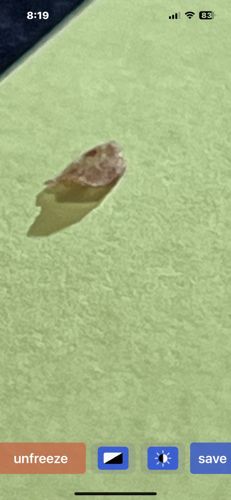Case-bearing Clothes Moth Larva
Scientific Name: Tinea pellionella
Order & Family: Lepidoptera (Moths), Tineidae (Fungus Moths and Clothes Moths)
Size: Larvae can reach up to 10-12 mm (0.4-0.5 inches) in length, while the adult moth has a wingspan of 9-16 mm (0.35-0.6 inches). The case itself is typically 6-10 mm long.

Natural Habitat
Indoors, especially in dark, undisturbed areas such as closets, attics, storage chests, and behind furniture. They prefer natural fibers like wool, silk, fur, feathers, and sometimes synthetic blends if mixed with natural materials.
Diet & Feeding
Keratin-containing materials, including woolens, silks, furs, feathers, felt, animal bristles, and occasionally cotton, linen, and synthetic fabrics soiled with human or animal products.
Behavior Patterns
The larva constructs a silk case that it carries with it as it feeds. It enlarges this case as it grows and can retreat completely into it when disturbed. They are typically slow-moving and prefer dark, humid environments. Adult moths are poor fliers and tend to scurry or hop. They are often seen near infested items.
Risks & Benefits
Potential risks include significant damage to textiles, clothing, carpets, and upholstered furniture made from natural fibers. They do not bite or transmit diseases to humans. There are no known direct benefits to humans, but as detritivores, they play a minor role in breaking down natural animal products in their natural, outdoor habitat.
Identified on: 9/24/2025